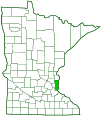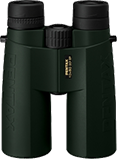Single-spotted flea beetle
(Disonycha uniguttata)
Conservation • Description • Habitat • Ecology • Distribution • Taxonomy
Conservation Status |
|||
| IUCN Red List | not listed |
||
| NatureServe | NNR - Unranked |
||
| Minnesota | not listed |
||
Description |
Single-spotted flea beetle is a small beetle, a moderate-sized leaf beetle, and a large flea beetle. It is found east of the Rocky Mountains. Adults are somewhat shiny, slender, oblong, ¼″ to 5 ⁄16″ (6 to 8 mm) long, and 1 ⁄16″ to ⅛″ (2.2 to 3.8 mm) wide. The head behind the eyes is covered by the pronotum. It may be entirely black but is usually pale or red at the base of the antennae. The space between the eyes is more than half the width of the head. The antennae are black and relatively long but less than half as long as the body. The basal segments are pale. The third segment is shorter than the fourth or fifth. The exoskeletal plate covering the thorax (pronotum) is about twice as wide as long and widest at the base, nearly as wide as the hardened forewings (elytra). On each side the rear corner is distinctly cut off at an oblique angle, which puts the corner at a distance from the elytron. The lateral margin is bowed outward, narrowly flattened, and sharp. There is a slight depression in the middle of the pronotum near the base. The pronotum is red with a whitish margin, There is usually a large black spot in the middle and one small dark brown spot on each side. Sometimes the spots merge together. The elytra are oblong with parallel sides, rounded in the shoulder (humeral) region, and broadly rounded at the tip. They have a narrow, flat, pale margin that does not extend all of the way to the tip. The surface is smooth, shiny, and hairless. It is distinctly and densely covered with pits that are not in rows. On the female there is no trace or only a faint trace of longitudinal ridges. Each elytron is dingy white (pale) with inner (sutural), middle, and lateral black stripes. The sutural stripe extends to the tip of the elytron, the lateral one does not. The black stripes are considerably broader than the pale ones. The plate between the wing bases (scutellum) is triangular and black. The legs are relatively short and slender. The third segment (femur) of each leg is usually pale or red, sometimes dark. The outer edge of the fourth leg segment (tibia) is shallowly grooved, even on the hind legs, and has a short spur at the tip (apex). The last part of each leg (tarsus), corresponding to the foot, has five segments. The fourth segment is very short and is concealed within the broadened tip of the third segment, making the tarsus appear to have only four segments. The first segment is about twice as long as the second, and on the male it is much enlarged. The claw at the tip of the tarsus has a short tooth at the base. The joint on the hind claw is not inflated. |
Size |
Total length: ¼″ to 5 ⁄16″ |
Similar Species |
Habitat |
|
Ecology |
Season |
|
Behavior |
Larvae feed on the lower surface of the leaves of the host plant. Adults chew tiny “shotholes” in the leaf. They jump when disturbed. |
Life Cycle |
Adults overwinter. In the spring, the female lays eggs on or near a host plant. |
Larva Food |
|
Adult Food |
|
Distribution |
||
|
Sources |
|
| 8/25/2025 | ||
Occurrence |
||
|
||
Taxonomy |
|
Order |
Coleoptera (Beetles) |
Suborder |
Polyphaga (Water, Rove, Scarab, Long-horned, Leaf, and Snout Beetles) |
Infraorder |
Cucujiformia |
Superfamily |
Chrysomeloidea (leaf beetles and allies) |
Family |
Chrysomelidae (leaf beetles) |
Subfamily |
Galerucinae (skeletonizing leaf and flea beetles) |
Tribe |
|
Subtribe |
Disonychina |
Genus |
Disonycha |
Flea beetles were formerly treated as the subfamily Alticnae. Disonycha uniguttata was formerly treated as a subspecies or synonym of Disonycha pensylvanica. |
|
Subordinate Taxa |
|
|
|
Synonyms |
|
|
|
Common Names |
|
single-spotted flea beetle |
|
Glossary
Elytra
The hardened or leathery forewings of beetles used to protect the fragile hindwings, which are used for flying. Singular: elytron.
Femur
On insects and arachnids, the third, largest, most robust segment of the leg, coming immediately before the tibia. On humans, the thigh bone.
Pronotum
The exoskeletal plate on the upper side of the first segment of the thorax of an insect.
Scutellum
The exoskeletal plate covering the rearward (posterior) part of the middle segment of the thorax in some insects. In Coleoptera, Hemiptera, and Homoptera, the dorsal, often triangular plate behind the pronotum and between the bases of the front wings. In Diptera, the exoskeletal plate between the abdomen and the thorax.
Tarsus
On insects, the last two to five subdivisions of the leg, attached to the tibia; the foot. On spiders, the last segment of the leg. Plural: tarsi.
Tibia
The fourth segment of an insect leg, after the femur and before the tarsus (foot). The fifth segment of a spider leg or palp. Plural: tibiae.
Visitor Photos |
Share your photo of this insect. |
||
This button not working for you? |
||
Alfredo Colon |
||
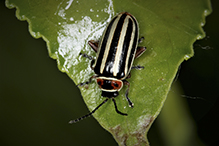 |
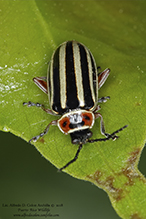 |
|
MinnesotaSeasons.com Photos |
|
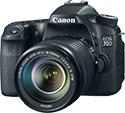
Slideshows |
|
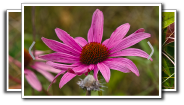
Visitor Videos |
Share your video of this insect. |
||
This button not working for you? |
||
|
Other Videos |
|

|
Created: 11/8/2018 Last Updated: © MinnesotaSeasons.com. All rights reserved. |
